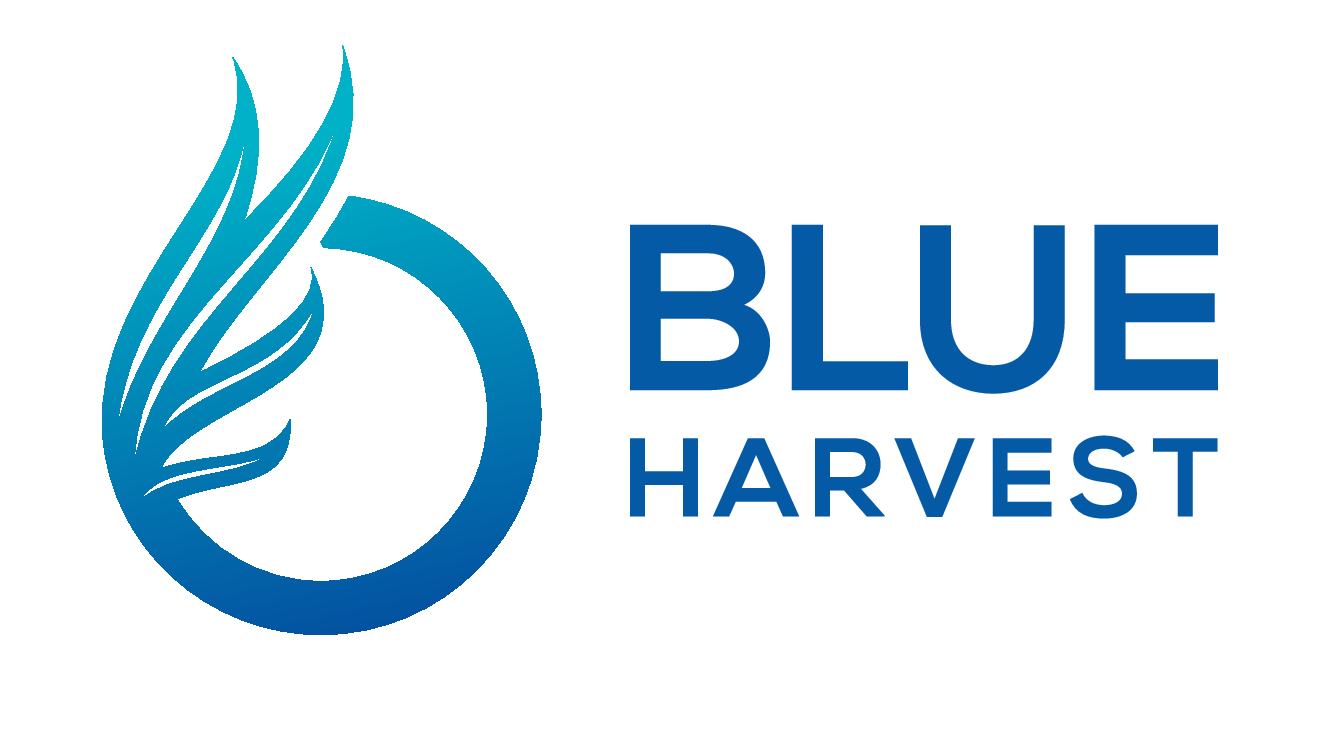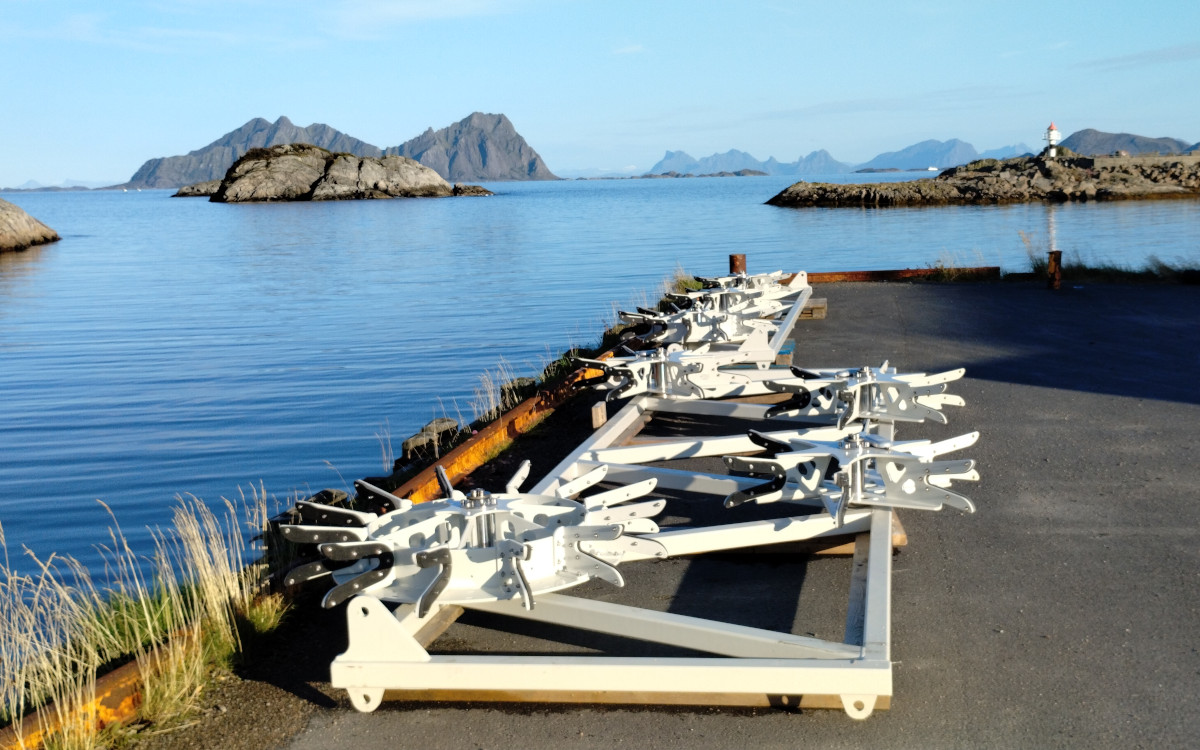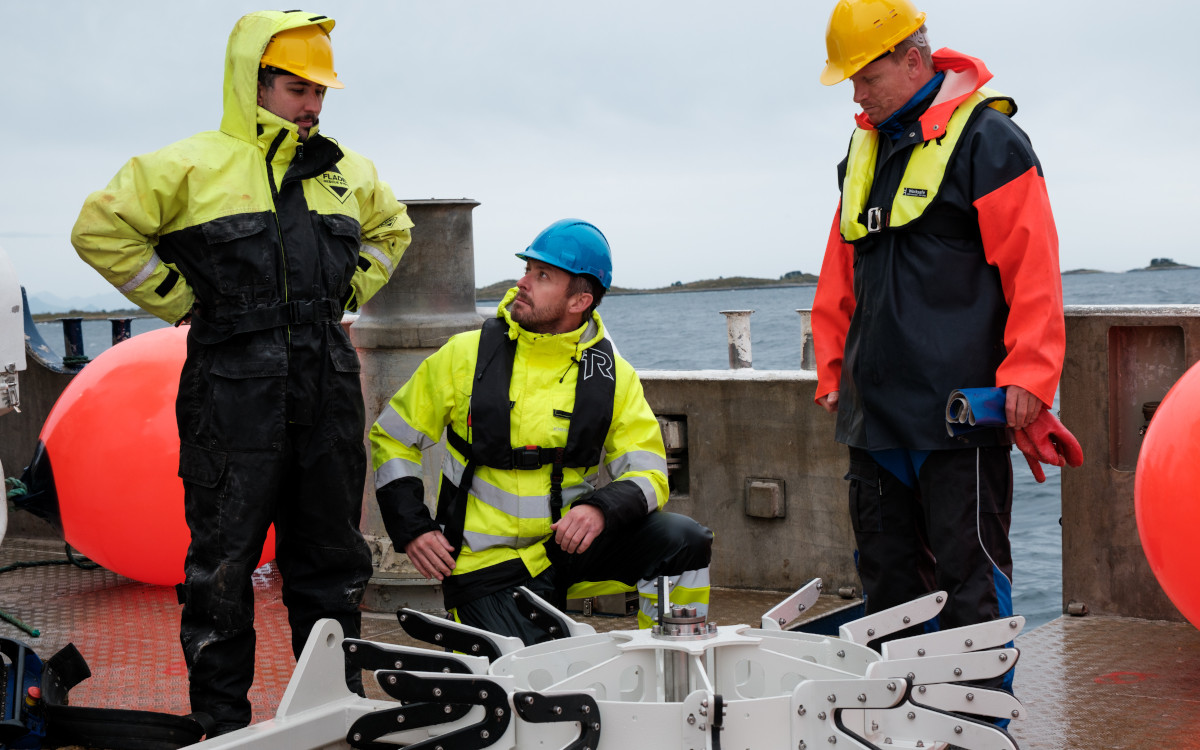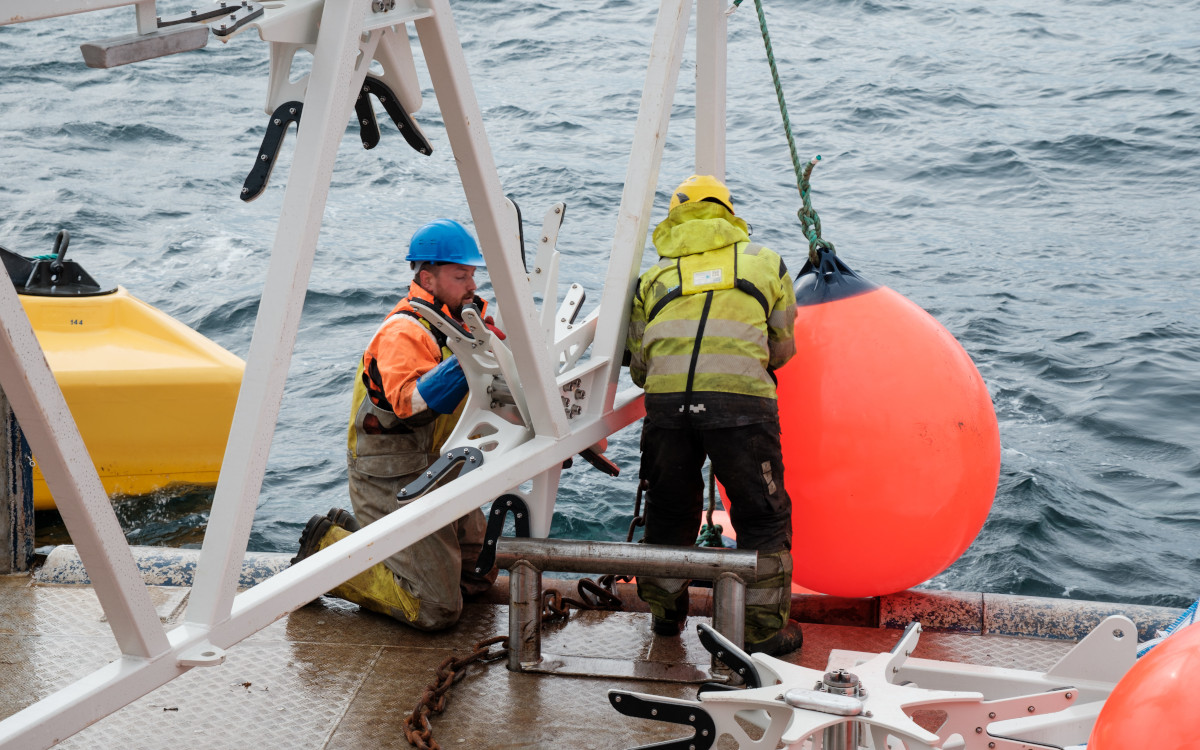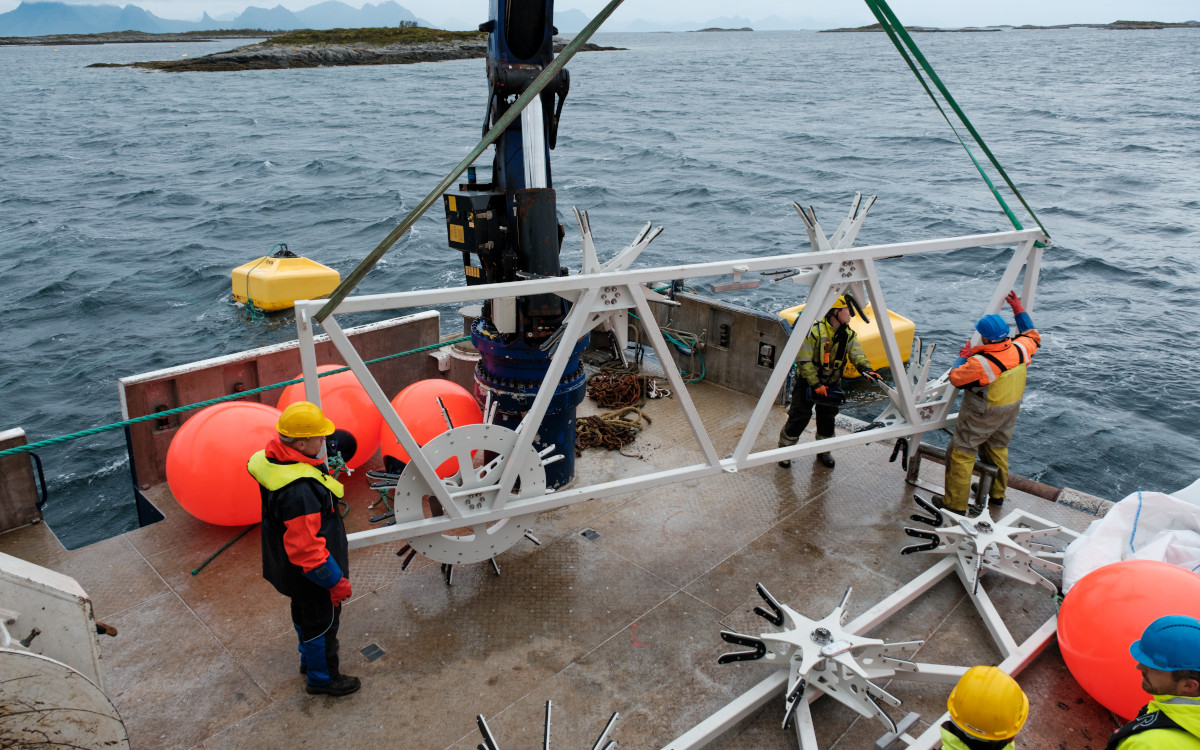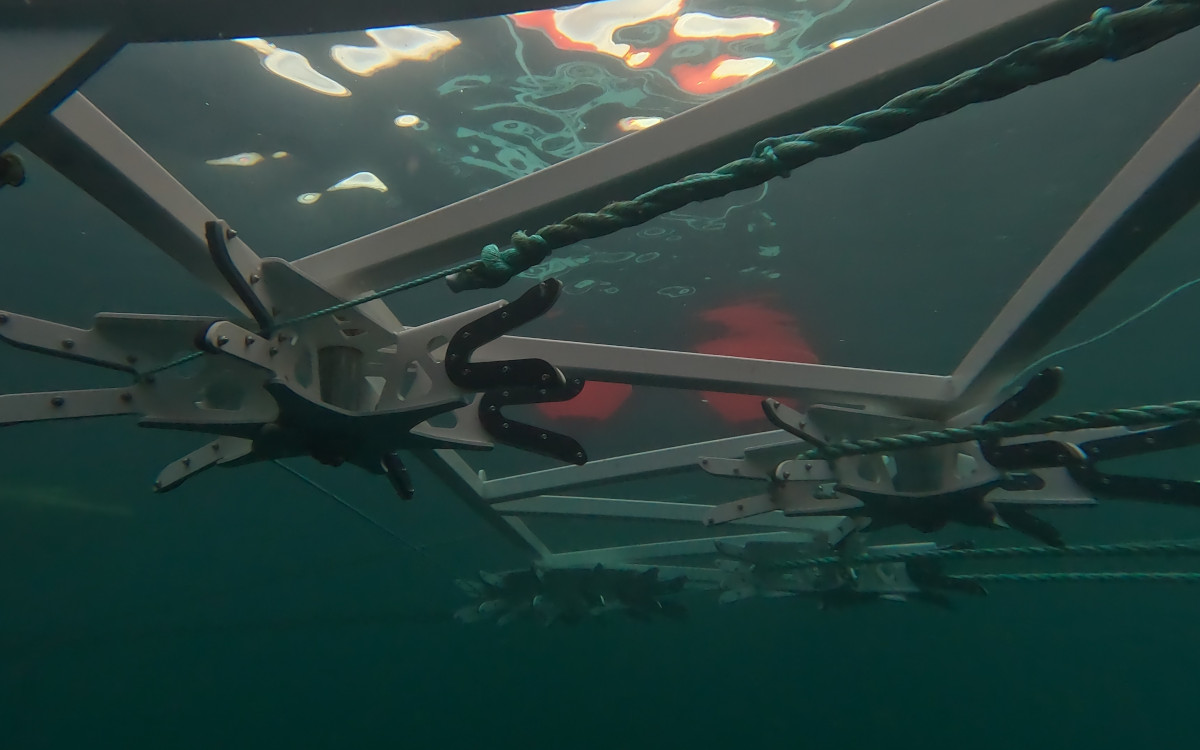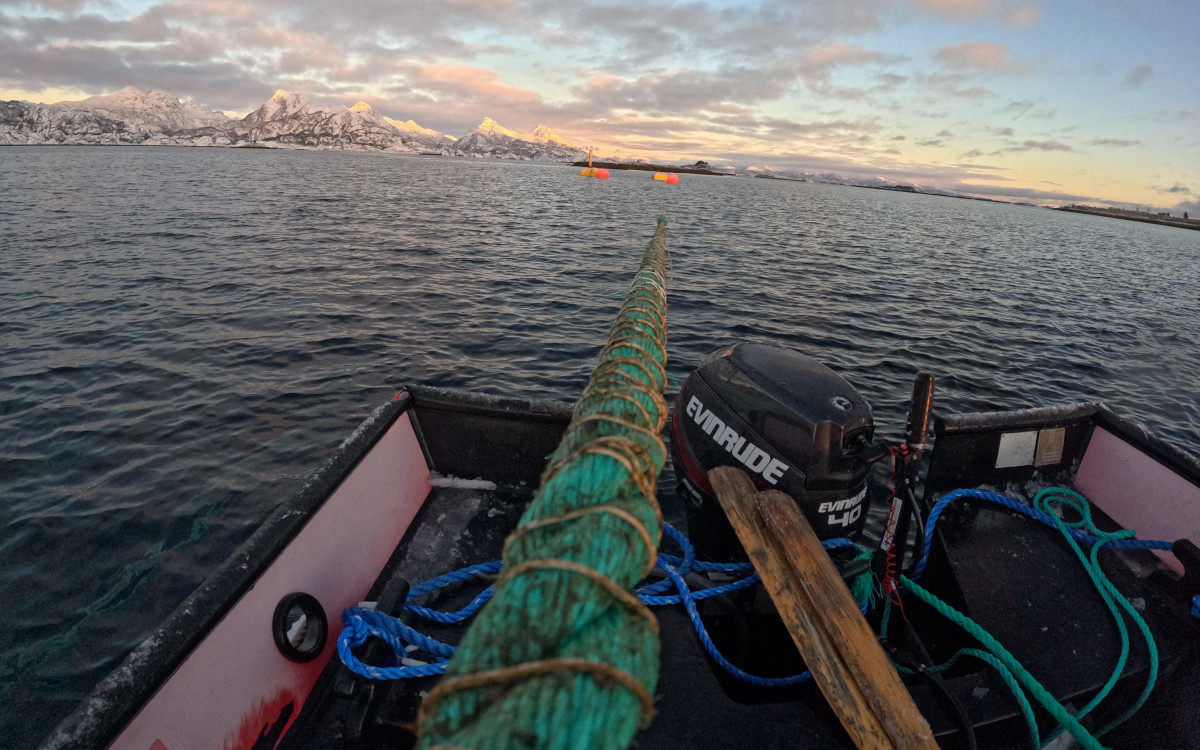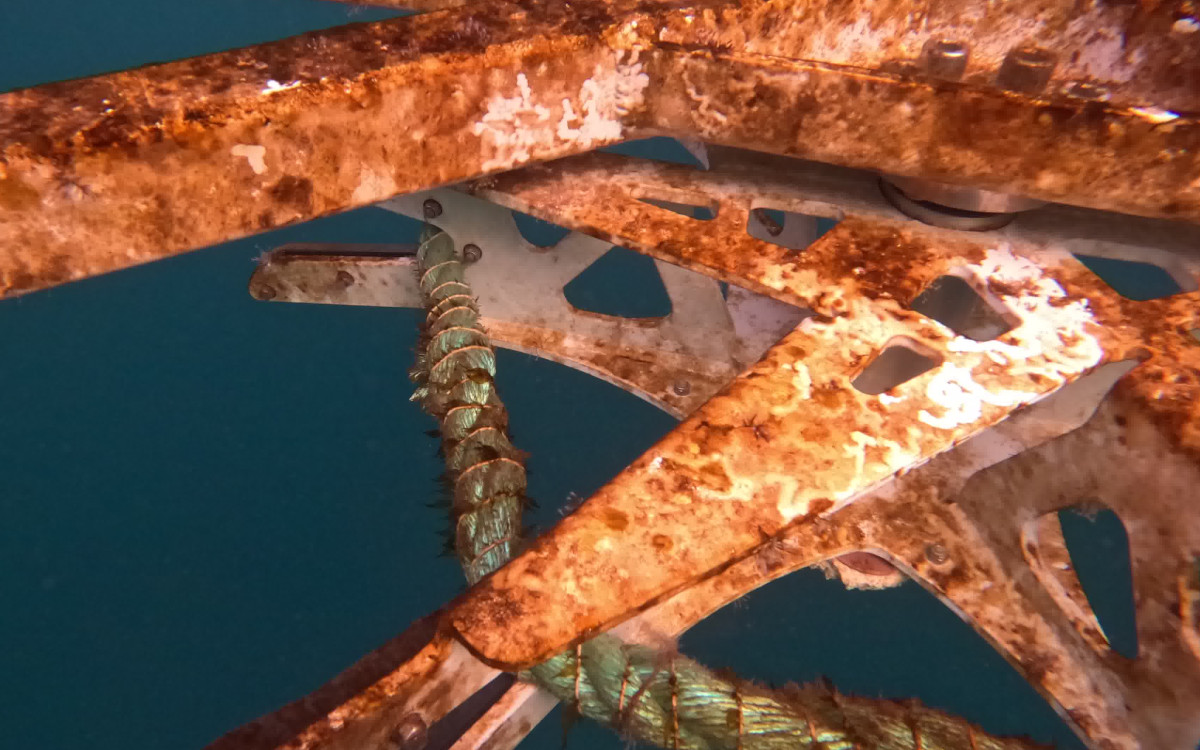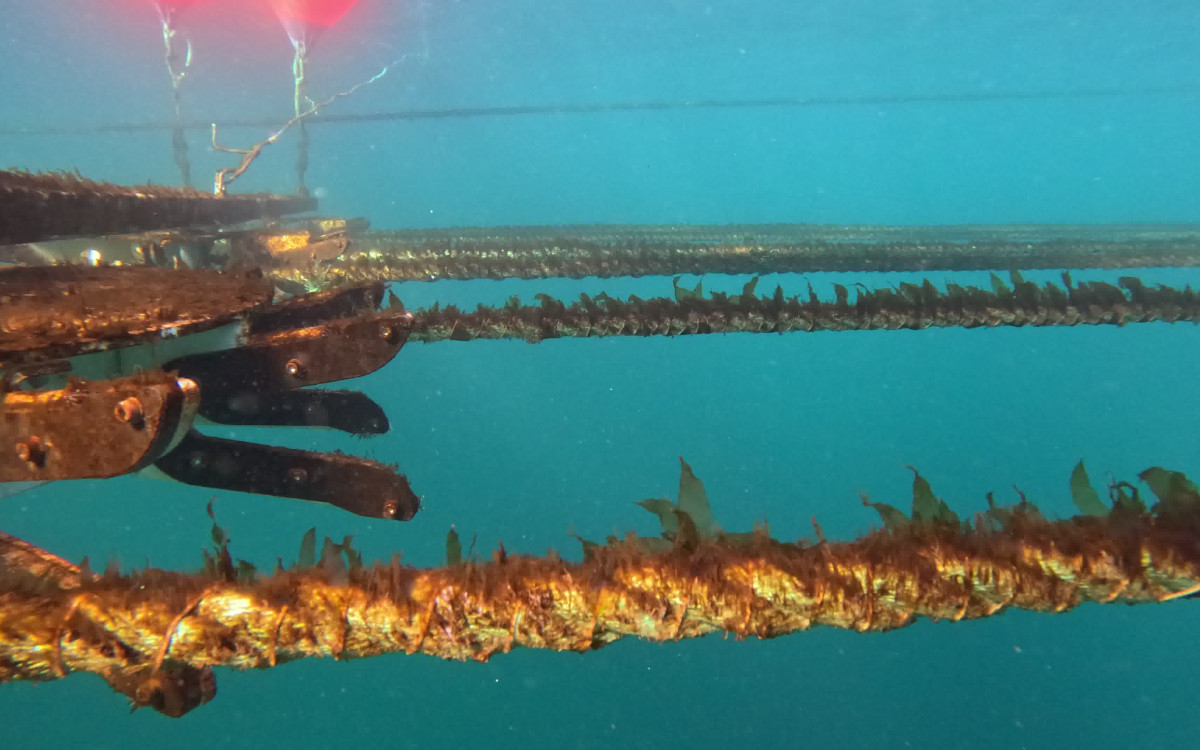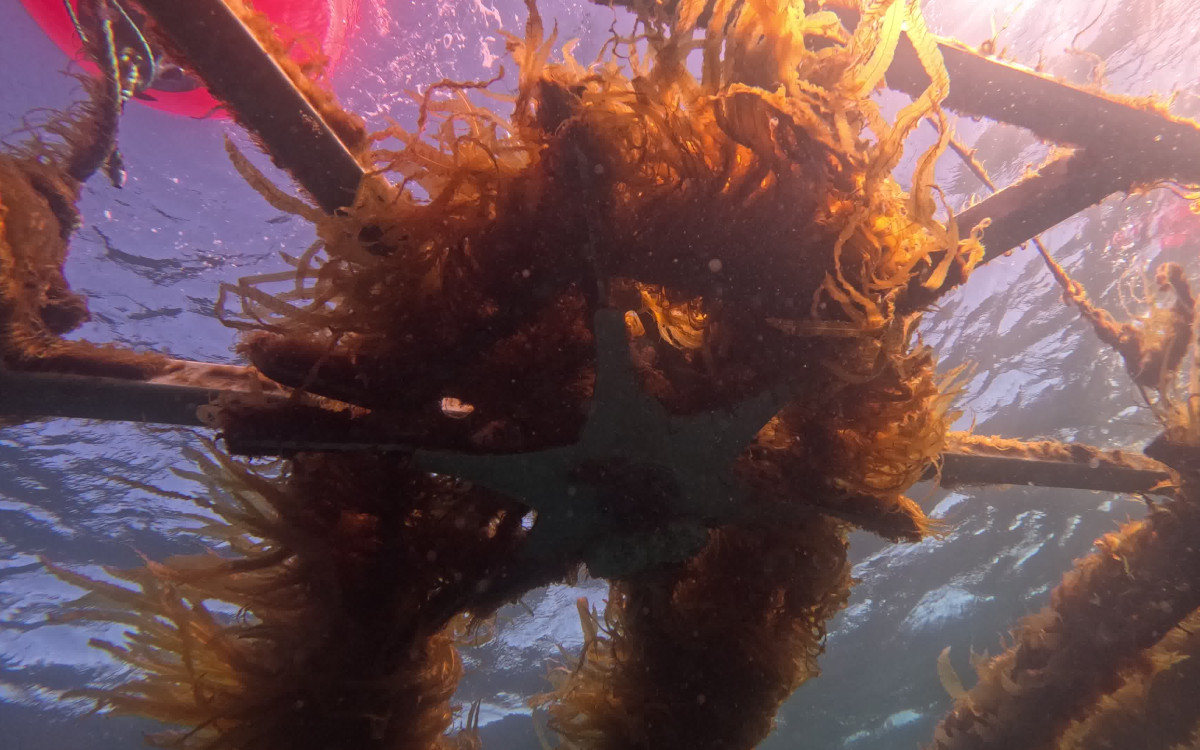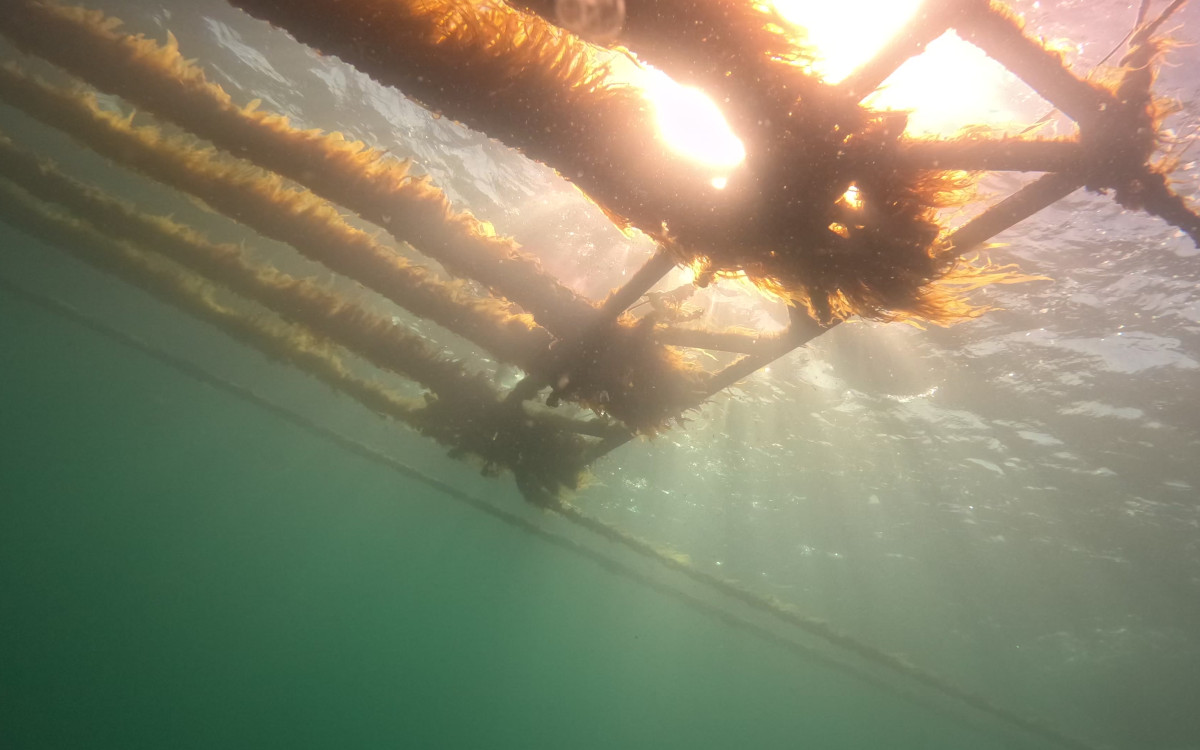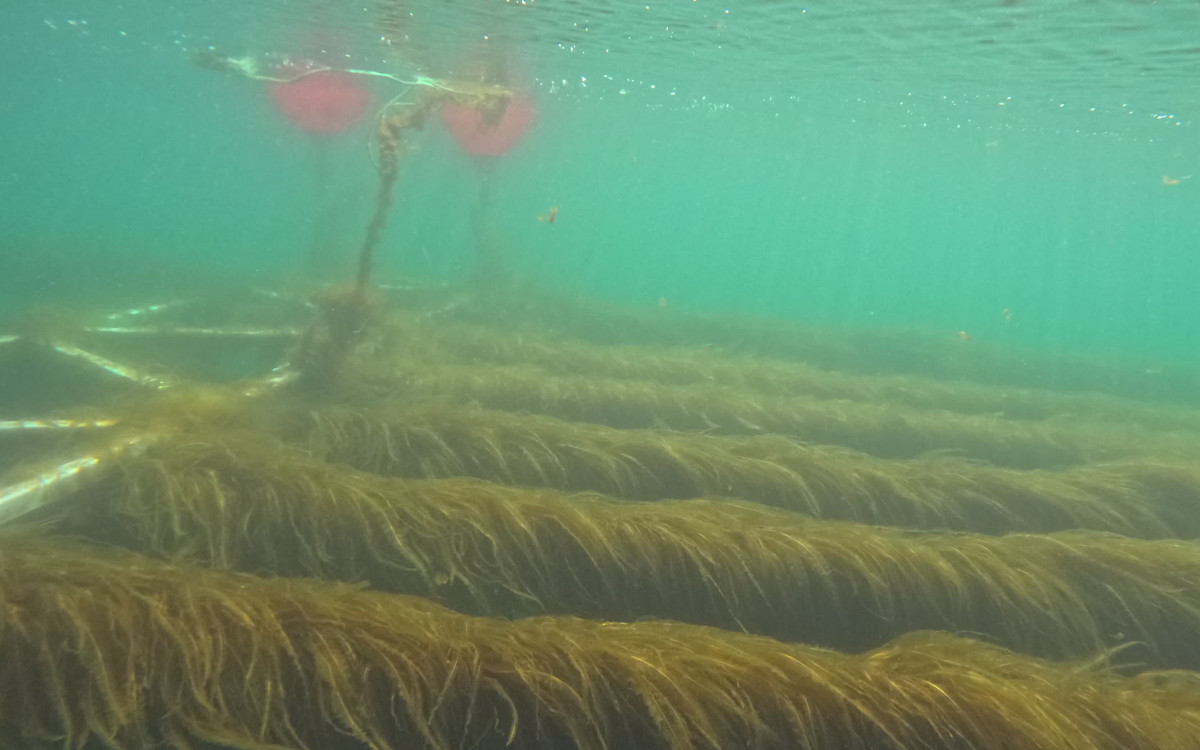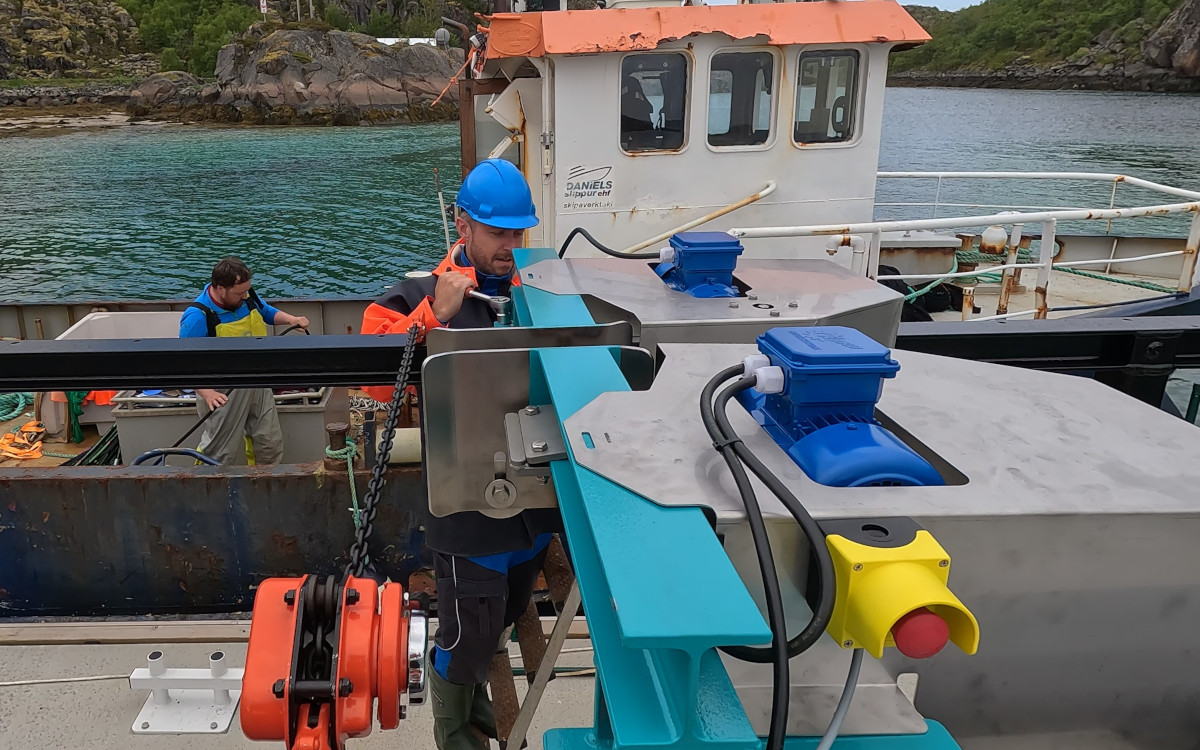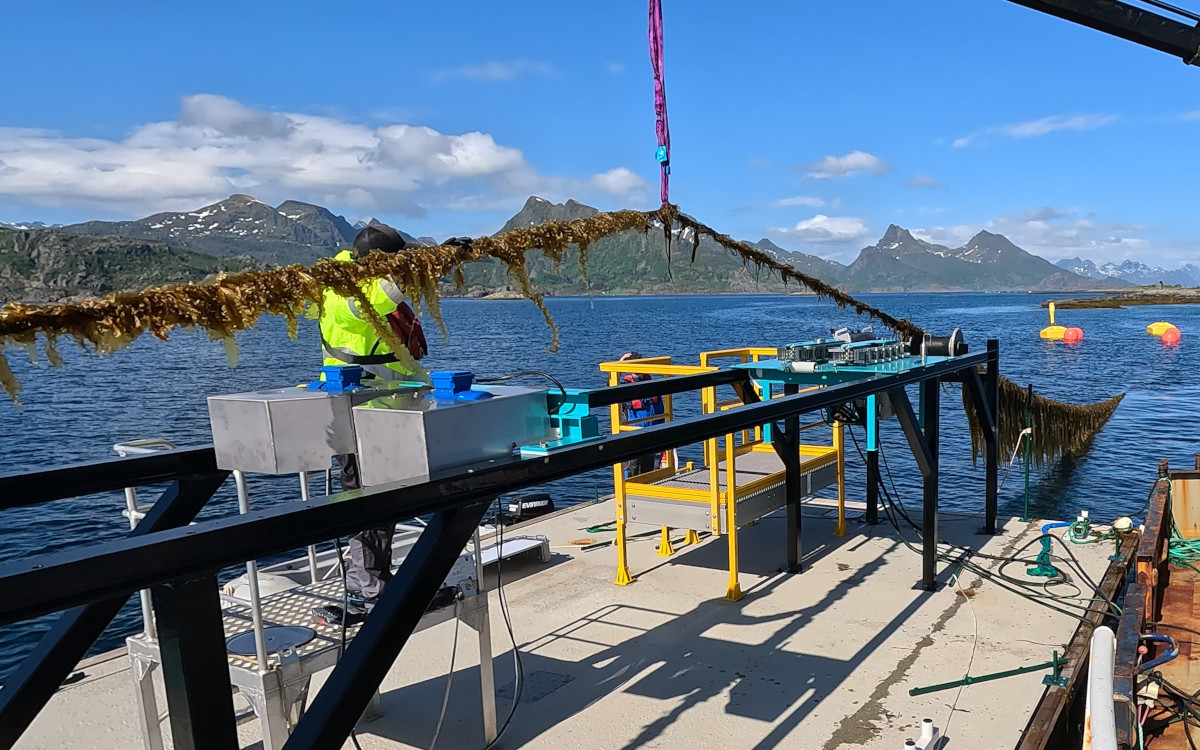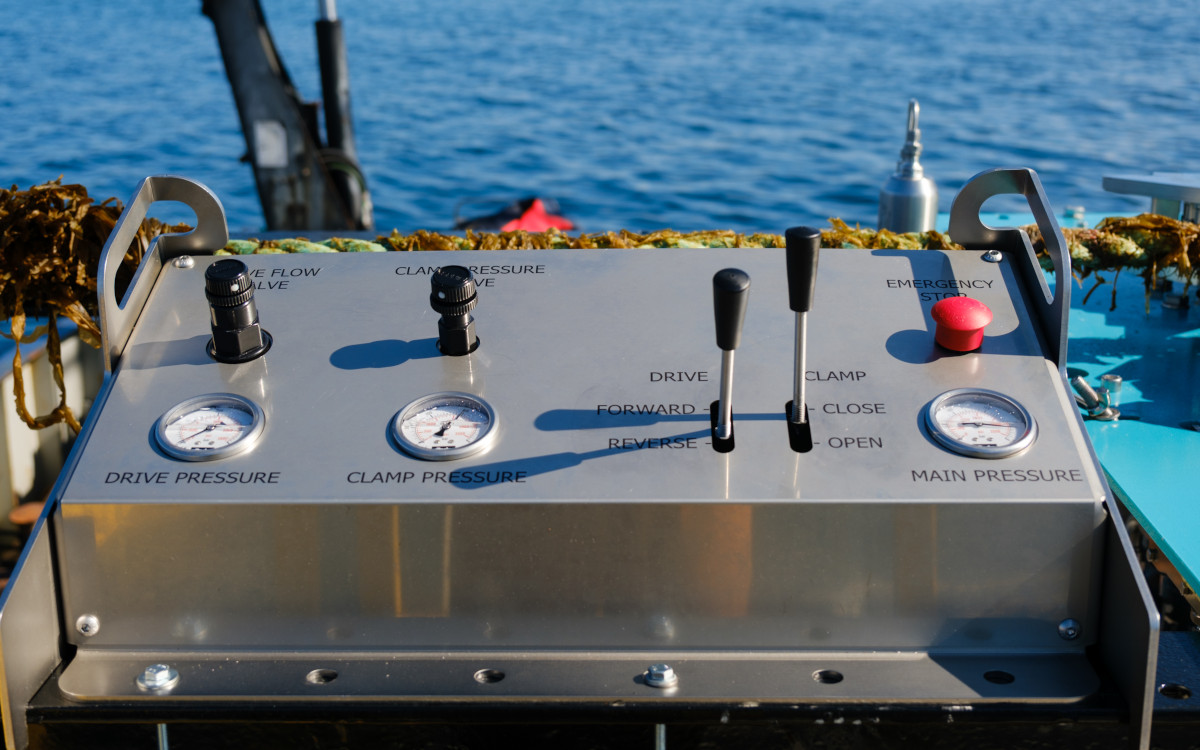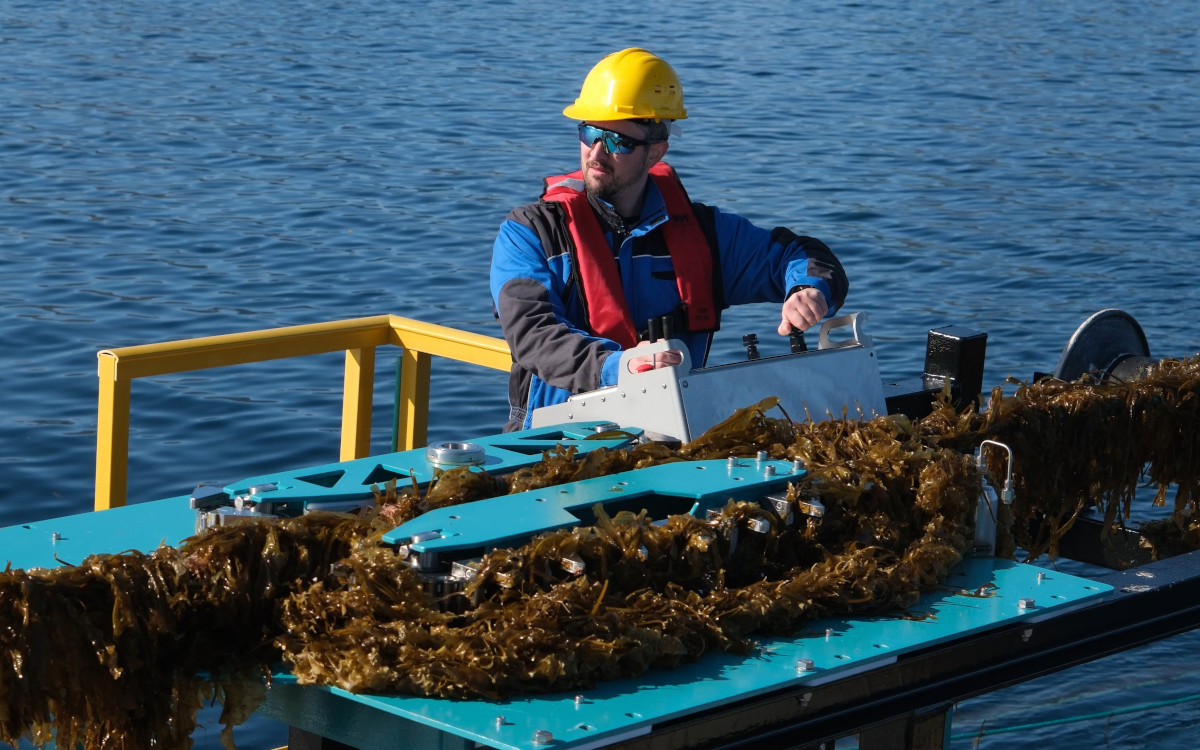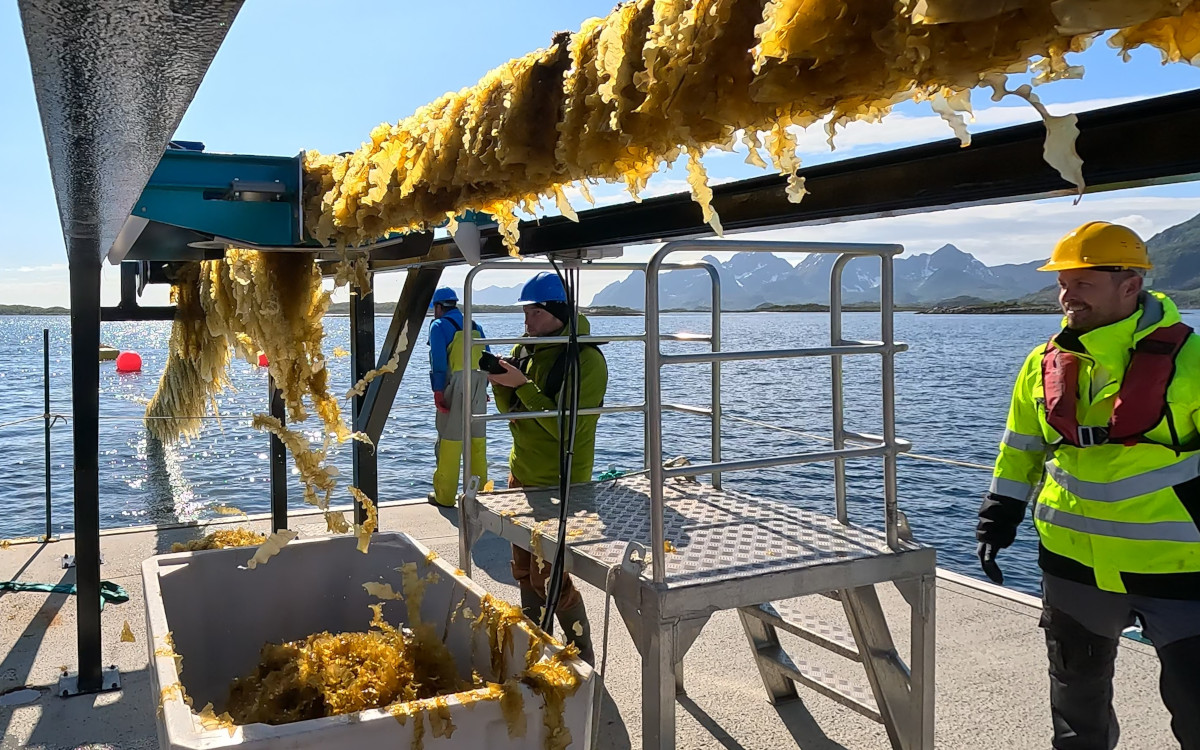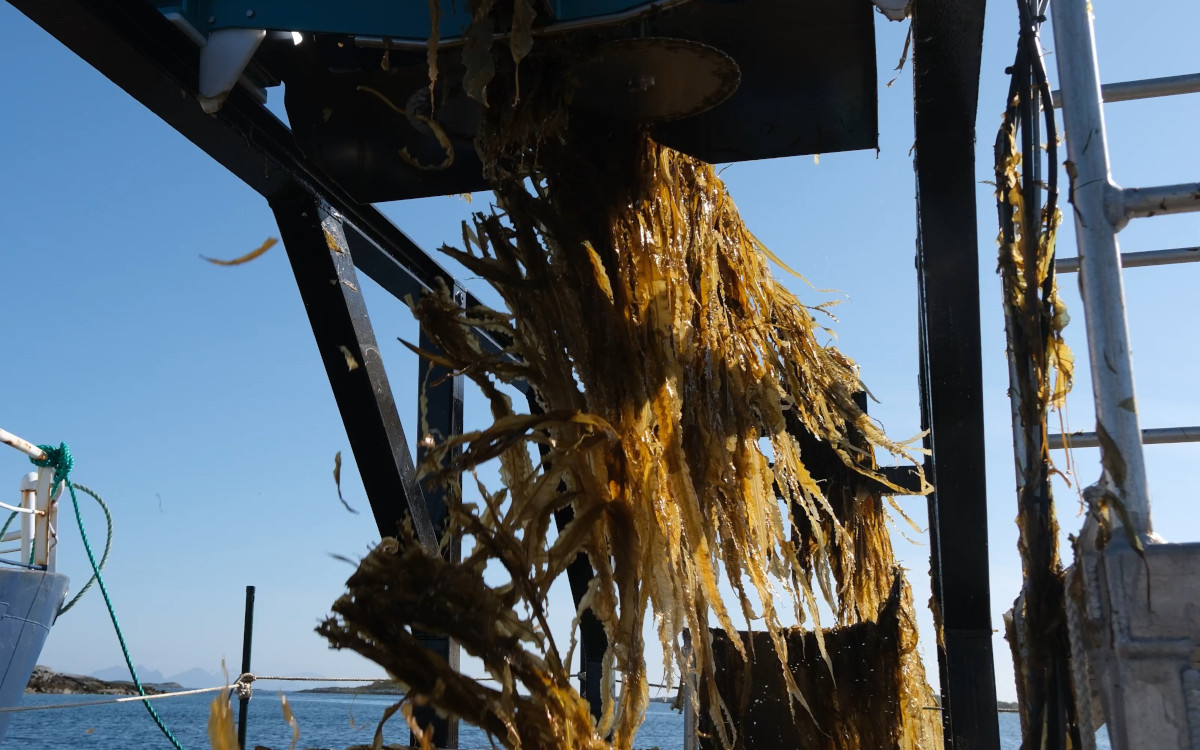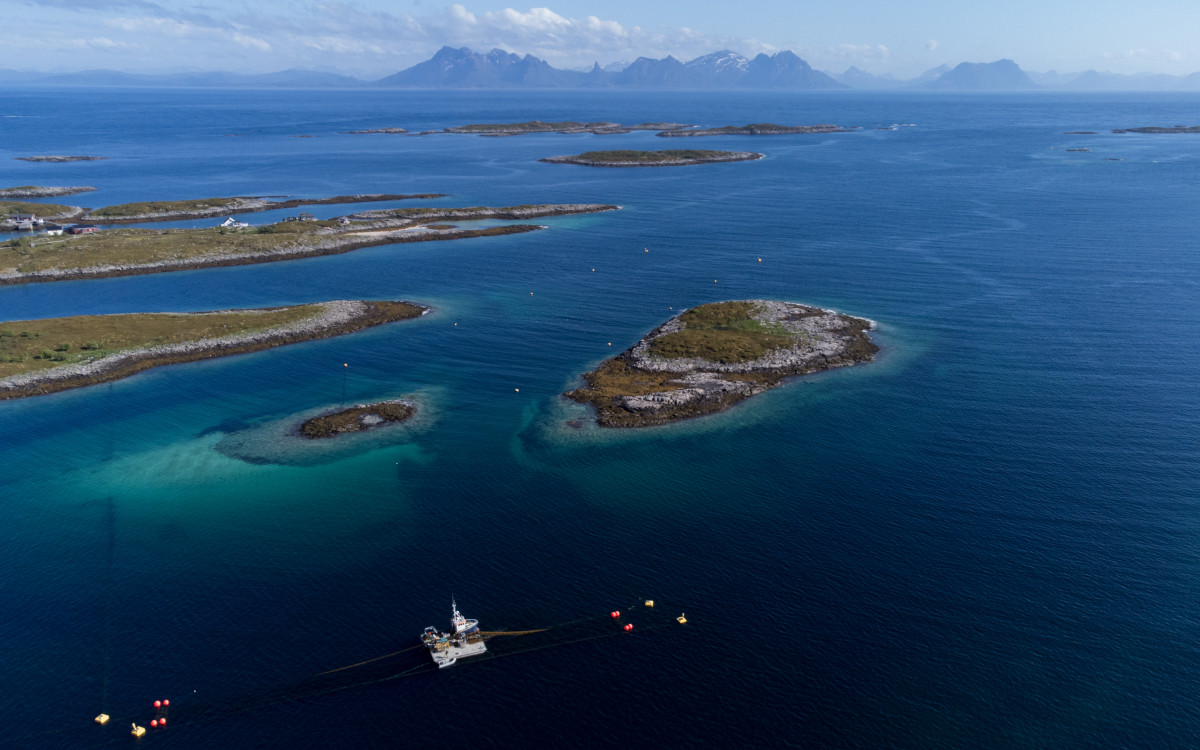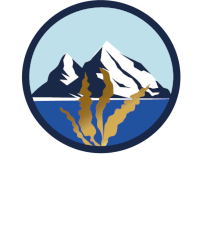Proof of Concept
Proof of Concept
Proof of Concept
It works
It works
We know we are not the only ones to have had the idea of a seaweed rope in a loop system, after all rope-and-pulley systems have been around for a long time. However, having an idea, and then go do it are completely different things. All the messy details that you don't notice, or skip over when you have it all in your head, become extremely important and need to be paid close attention to.
One of the more important questions we had was how to secure the loop rope, and the answer was tension. High tension not only secures the rope firmly, but also allows for dense deployment. The density is determined by the size of the sheaves, which is at 80 cm diameter in the prototype, and there is really no point of going smaller, the seaweed needs some space to grow in. Norway saw one of the worst storms in decades during winter of 2024, the storm Ingunn hit with an average speed of 55 m/sec, which is extreme. The Loop Farm had no problems dealing with this, so we feel confident going forward that we have the right basic design, it is very secure.
High tension, of course, requires the equipment to be specialized in such a way as to keep the tension while not causing damage to the seaweed or the rope. Then there was the issue of how to move the loop rope, it became clear early on that the drive unit, would have to be strong and gentle at the same time. It is possible to position the modules for seeding and harvesting on either side of the drive unit, so you would never have to run them through the drive unit, but if you want to regrow a new crop from the previous season the drive unit needs to let seaweed pass through unharmed.
Once the Loop Farm and drive unit were prototyped the harvest and cleaning modules were easy by comparison. Seeding, however, is not so straight forward. The Loop Farm prototype had to be seeded by hand, not only because seeding module was not a priority early on, but even if we had prototyped it, we couldn't be sure that it worked, and we needed to test the system with seaweed. The seeding module is currently in development and will be prototyped in the coming season. We expect the complete system to be commercially ready late summer or early fall 2025.
One of the more important questions we had was how to secure the loop rope, and the answer was tension. High tension not only secures the rope firmly, but also allows for dense deployment. The density is determined by the size of the sheaves, which is at 80 cm diameter in the prototype, and there is really no point of going smaller, the seaweed needs some space to grow in. Norway saw one of the worst storms in decades during winter of 2024, the storm Ingunn hit with an average speed of 55 m/sec, which is extreme. The Loop Farm had no problems dealing with this, so we feel confident going forward that we have the right basic design, it is very secure.
High tension, of course, requires the equipment to be specialized in such a way as to keep the tension while not causing damage to the seaweed or the rope. Then there was the issue of how to move the loop rope, it became clear early on that the drive unit, would have to be strong and gentle at the same time. It is possible to position the modules for seeding and harvesting on either side of the drive unit, so you would never have to run them through the drive unit, but if you want to regrow a new crop from the previous season the drive unit needs to let seaweed pass through unharmed.
Once the Loop Farm and drive unit were prototyped the harvest and cleaning modules were easy by comparison. Seeding, however, is not so straight forward. The Loop Farm prototype had to be seeded by hand, not only because seeding module was not a priority early on, but even if we had prototyped it, we couldn't be sure that it worked, and we needed to test the system with seaweed. The seeding module is currently in development and will be prototyped in the coming season. We expect the complete system to be commercially ready late summer or early fall 2025.
Gallery
Gallery
Gallery
Prototype - First Harvest
Prototype - First Harvest

